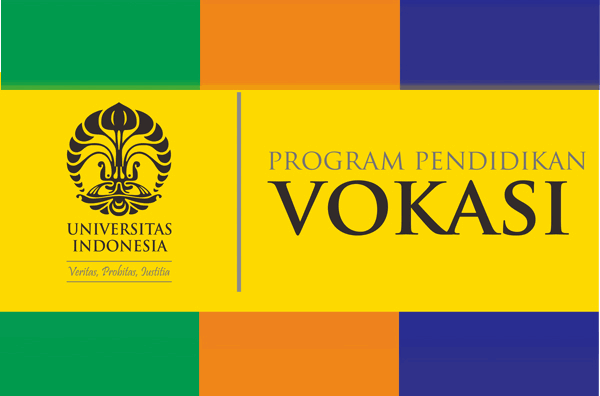Jurnal Fisioterapi Terapan Indonesia
Abstract
Neck pain is a musculoskeletal problem that is often encountered in productive age, one of the triggers for neck pain is an unergonomic position for a long time. For example when using a smartphone, the position of the neck will tend towards the front. The use of smartphones in this technological era takes a long time. This is because smartphones have become part of student life. This study aims to determine the effect of the duration of smartphone use on the frequency of neck pain. This research method uses descriptive cross sectional with a total sample of 68 people, while the research sample is students studying in Semarang. The results showed that 55% of the sample used a smartphone with a duration ranging from 4-8 hours and as many as 35% of the sample experienced pain frequency less than 1 time per month and the results of the bivariate analysis of this study found that the correlation between the duration of smartphone use and neck pain was 0.160 with a significance between the two variables of 0.211. Based on the results of the study it can be concluded that the duration of smartphone use will affect the level of neck pain frequency with the correlation between the two variables being unidirectional, which means that the longer you use a smartphone, the higher the frequency of neck pain and the lower the significance level between the two variables. So it is necessary to carry out further research with a larger number of samples and more in-depth analysis.
References
1. Akodu, A. K., Akinbo, S. R. and Young, Q. O. (2018) ‘Correlation among smartphone addiction, craniovertebral angle, scapular dyskinesis, and selected anthropometric variables in physiotherapy undergraduates’, Journal of Taibah University Medical Sciences, 13(6), pp. 528–534. doi: 10.1016/j.jtumed.2018.09.001.
2. Anam, M. C. (2016) ‘Hubungan Forward Head Posture Saat Menggunakan Smartphone Dengan Timbulnya Nyeri Leher Pada Mahasiswa Fikes UMM’.
3. Andrews, S. et al. (2015) ‘Beyond Self-Report: Tools to Compare Estimated and Real-World Smartphone Use’, PLOS ONE. Public Library of Science, 10(10), p. e0139004. Available at: https://doi.org/10.1371/journal.pone.0139004.
4. Bear, M. F., Connors, B. W. and Paradiso, M. A. (2016) Neuroscience: Exploring the Brain. Wolters Kluwer. Available at: https://books.google.co.id/books?id=vVz4oAEACAAJ.
5. Eitivipart, A. C., Viriyarojanakul, S. and Redhead, L. (2018) ‘Musculoskeletal disorder and pain associated with smartphone use: A systematic review of biomechanical evidence’, Hong Kong Physiotherapy Journal. World Scientific Publishing Co. Pte Ltd, 38(2), pp. 77–90. doi: 10.1142/S1013702518300010.
6. Kazeminasab, S. et al. (2022) ‘Neck pain: global epidemiology, trends and risk factors’, BMC Musculoskeletal Disorders, 23(1), p. 26. doi: 10.1186/s12891-021-04957-4.
7. Kim, D. H., Kim, C. J. and Son, S. M. (2018) ‘Neck Pain in Adults with Forward Head Posture: Effects of Craniovertebral Angle and Cervical Range of Motion’, Osong Public Health and Research Perspectives. Korea Centers for Disease Control and Prevention, 9(6), p. 309. doi: 10.24171/J.PHRP.2018.9.6.04.
8. Kim, S. Y. and Koo, S. J. (2016) ‘Effect of duration of smartphone use on muscle fatigue and pain caused by forward head posture in adults’, Journal of Physical Therapy Science, 28(6), pp. 1669–1672. doi: 10.1589/jpts.28.1669.
9. Mahmoud, N. F. et al. (2019) ‘The Relationship Between Forward Head Posture and Neck Pain: a Systematic Review and Meta-Analysis’, Current Reviews in Musculoskeletal Medicine. Springer, 12(4), pp. 562–577. doi: 10.1007/S12178-019-09594-Y/TABLES/4.
10. Munawir, A., Widhiyanto, A. and Prayitno, H. (2017) ‘The Effect of Duration of Smartphone Usage on Neck Pain Telemedicine View project Biostatistics View project The Effect of Duration of Smartphone Usage on Neck Pain’, Dama International Journal of Researchers (DIJR). Available @, ISSN(11), pp. 54–61. Available at: www.damaacademia.com (Accessed: 25 April 2022).
11. Nadhifah, N. et al. (2021) ‘Gambaran Kejadian Nyeri Leher Pada Pengguna Smartphone (Studi Di Pulau Jawa 2020)’, Jurnal Kesehatan Masyarakat. Fakultas Kesehatan Masyarakat Universitas Diponegoro, 9(4), pp. 548–554. doi: 10.14710/JKM.V9I4.30516.
12. Paksaichol, A. et al. (2012) ‘Office workers’ risk factors for the development of non-specific neck pain: a systematic review of prospective cohort studies’, Occupational and Environmental Medicine, 69(9), pp. 610–618. doi: 10.1136/oemed-2011-100459.
13. Sari, A. I. et al. (2020) ‘Digital learning, smartphone usage, and digital culture in indonesia education’, Integration of Education. National Research Ogarev Mordovia State University, 24(1), pp. 20–31. doi: 10.15507/1991-9468.098.024.202001.020-031.
14. Silva, A. G. et al. (2009) ‘Head Posture and Neck Pain of Chronic Nontraumatic Origin: A Comparison Between Patients and Pain-Free Persons’, Archives of Physical Medicine and Rehabilitation, 90(4), pp. 669–674. doi: 10.1016/j.apmr.2008.10.018.
15. Tortora, G. J. and Derrickson, B. (2014) Principles of Anatomy & Physiology 14th Edition, Wiley.
Bahasa Abstract
Nyeri leher menjadi salah satu permasalahan muskuloskeletal yang sering dihadapi pada usia produktif, salah satu pemicu nyeri leher adalah posisi yang tidak ergonomis dalam waktu lama. Contohnya saat menggunakan smartphone, posisi leher akan cenderung kearah depan. Penggunan smartphone di era teknologi ini menghabiskan waktu dalam waktu lama. Hal ini karena smartphone sudah menjadi bagian dari kehidupan pelajar. Penelitian ini bertujuan untuk mengetahui pengaruh durasi penggunaan smartphone terhadap frekuensi nyeri leher. Metode penelitian ini menggunakan deskriptif cross sectional dengan jumlah sampel 68 orang, sedangkan sampel penelitian adalah mahasiswa yang berkuliah di Semarang. Hasil penelitian menunjukkan bahwa 55% sampel menggunakan smartphone dengan durasi berkisar antara 4-8 jam dan sebanyak 35% sampel mengalami frekuensi nyeri kurang dari 1 kali per bulan dan hasil analisis bivariat penelitian ini didapatkan bahwa korelasi antara durasi penggunaan smartphone terhadap nyeri leher adalah sebesar 0,160 dengan signifikansi antara kedua variabel tersebut adalah sebesar 0,211. Berdasarkan hasil penelitian dapat disimpulkan bahwa durasi penggunaan smartphone akan mempengaruhi tingkat frekuensi nyeri leher dengan korelasi antara kedua variabel terebut bersifat searah yang berarti semakin lama menggunakan smartphone maka frekuensi nyeri leher akan semakin tingga dan tingkat signifikansi rendah diantara kedua variabel. Maka perlu dilakukan penelitian lanjutan dengan jumlah sampel yang lebih banyak dan analisis lebih mendalam.
Recommended Citation
Wibisono, Irawan; Purnomo, Didik; and Amanati, Suci
(2023)
"Pengaruh Durasi Penggunaan Smartphone Di Kalangan Pelajar Terhadap Frekuensi Nyeri Leher,"
Jurnal Fisioterapi Terapan Indonesia: Vol. 2:
Iss.
1, Article 22.
DOI: 10.7454/jfti.v2i1.1045
Available at:
https://scholarhub.ui.ac.id/jfti/vol2/iss1/22
Included in
Kinesiotherapy Commons, Neurology Commons, Physical Therapy Commons, Physiotherapy Commons








